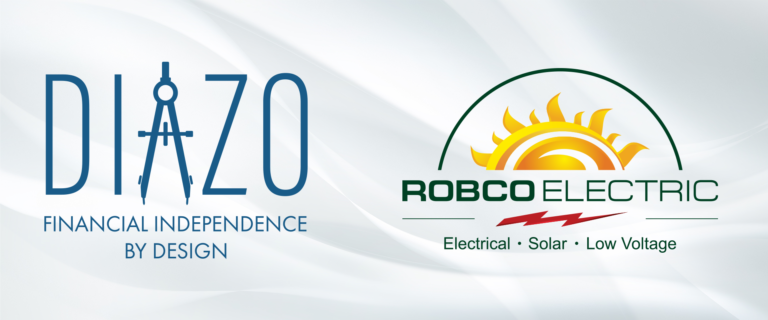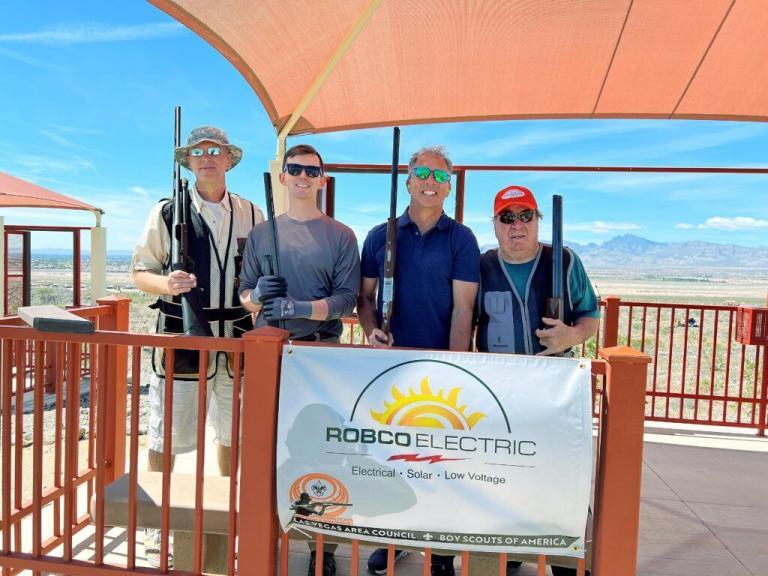At Robco, we believe in reducing demand as much as you can so that you can buy less equipment and get more offset from your system.
This week we had a few conversations with customers about energy efficiency. They had older homes and pretty big power bills. Instead of recommending larger solar arrays to reduce their bills, we recommended smaller solar arrays combined with energy efficiency measures. It’s true that the cheapest kilowatt hour is the one you never use. Robco doesn’t make any profit from making these energy efficiency recommendations. We do not sell or install most of them items, however we know they work as advertised and are worth the money. In fact, doing this reduces our profits as we’re selling less solar panels, but it is more economical for the customer to cut consumption than buy more solar panels. At Robco, we always put your best interests first. That’s Solar Built on Trust.
Check out this review from our customer Barry on how well combining energy efficiency measures with solar worked out for him.
“Since the panels have been on, I check just about every day to see how I am doing. According to estimates, my September production was supposed to be 63% of my usage. However, I produced over 95% for the time the panels were active in September and I am getting over 100% in October. Part of this is that I replaced my 18-year-old AC units in the time between signing the contract with Robco and waiting for the HOA because one of them failed. But another part of that (especially in October when I typically do not even use my air conditioning) Is the 15 panels on my north roof that are mounted with reverse tilt are giving more efficiency than the original estimate.” READ THE FULL REVIEW
Reducing power demand before you add solar.
So, what are the big culprits that drive up power bills here in Southern NV? Read on for the 5 most effective ways to cut your use.
Just a quick tip: If the power company is offering a rebate on an energy-saving measure, you can trust that it will be effective in actually reducing power use. They are mandated by the state to offer these rebates as part of the energy efficiency goals laid out in Nevada Revised Statutes, so the measures are tested and effective – not just marketing hype.
1 HVAC Check Up
Your AC uses more power than any other single item in your house, so making sure it’s working at peak efficiency is the first thing you should do on your quest to reduce. As your AC unit(s) ages, it becomes far less efficient and gobbles up more and more power to do the same job. AC units typically last 12-15 years. If yours is older than that, looking at replacing it early with a more energy efficient unit can have a HUGE impact on your power use.
Get your unit serviced and cleaned. Just like a car, your HVAC needs regular service. An annual tune up and cleaning is worth the money.
If your unit is on the ground, make sure the area around it is clear. Overhanging foliage can get into the unit and block air flow. It can also help to shade the unit to keep the air it is drawing in a bit cooler.
Are your air vents in every room open? They should be. Air needs to move to maintain an even temperature throughout your house.
Are you changing your air filter every month? Dirty air filters block air flow and make your system work harder.
If your HVAC is more than 10 years old, it might be time to shop for a new high efficiency unit. As your HVAC ages, it uses a lot more power to do the same job. NV Energy has a rebate on replacement units and early retirement of older units.
Are you air ducts sealed? Cool or warm air escaping from your ducts into your attic costs you money and comfort. Especially in older homes, getting your ducts sealed is a good investment.
Invest in a smart thermostat such as a Nest, Ecobee or Sensi. You can get one for FREE from NV Energy, too. These devices run your HVAC in the most efficient manner possible and give you more control over how your HVAC uses power – including being able to change the temperature from your phone. Smart thermostats can cut overall power use by 10% or more, making them well worth the investment. Nest Thermostats integrate with our Enlighten solar monitoring software.
2 Update your pool pump for a big cut to your power bill.
Swimming pools are a blessing in our summer heat, but they are also energy hogs. Next to the HVAC system, pools are the 2nd biggest consumer of power. Continuing to use an older single speed pool pump could be costing you hundreds of dollars a year!
If you have an older single speed pool pump, upgrade to a variable speed pump. These have much more efficient motors, cutting power use by as much as 40%. Most people run their pumps about twice as long as needed, too. A new pump should cost about $1,400 installed and is well worth the investment. Upgrading your pump and reducing run time to about 3-4 hours a day can reduce overall power use in your pool by as much as 75%! NV Energy just brought back the pool pump rebate!
WHY ARE POOL PUMPS SUCH POWER HOGS AND HOW DOES A VARIABLE SPEED PUMP CUT POWER USE? CHECK OUT THESE CALCULATIONS FROM A POOL EXPERT.
“The following pool pump electrical costs are based on the national average of 12 cents per kWh.
1.5 HP pump running cost for 1 hour: $0.26
(2.2 kW x 0.12 / kWh)
1.5 HP pump running for 6 hours: $1.56 ($46.80 monthly)
1.5 HP pump running for 8 hours: $2.08 ($62.40 monthly)
1.5 HP pump running for 12 hours: $3.12 ($93.60 monthly)
1.5 HP pump running for 24 hours: $6.24 ($187.20 monthly)
In an attempt to create a realistic comparison the following variable speed pump values are based on 2 hours per day of full RPM run time which accounts for vacuuming, and any other high flow demands that you pool might have. Of the remaining 22 hours 10 hours are based on 50% run speed (1725 RPM) followed by 12 hours on 862 RPM. This calculation gives a best estimate real-world program setting to give you a realistic cost comparison versus the single speed pump schedule shown above. For this example we will ONLY use the pump affinity laws to determine the electrical costs based on reducing the motor RPM. In reality the savings will be even greater than this due to a reduction in system efficiency losses from the slower moving water. This also does not account for the fact that variable speed pumps are a more efficient design. This can be considered a conservative real-world savings breakdown.
1.5 HP variable speed pump running at 3450 RPM: $0.26 per hour
1.5 HP variable speed pump running at 1725 RPM: $0.0325 per hour
1.5 HP variable speed pump running at 862 RPM: $0.004 per hour
(0.26 x 2) + (0.0325 x 10) + (0.004 x 12) = $0.89 per day ($26.70 monthly)”
WOW! That’s a huge difference in operating costs! Check with your pool pro or visit any pool supply store to get a new pump. Don’t forget to grab the NV Energy pool pump rebate!
3 Cool off with LED lights
LED lights use a great deal less power and generate much less heat than incandescent or CFL bulbs. They also last a lot longer. Prices on LEDs have come way down in the last 2 years. Check out the light bulb aisle on your next shopping trip since switching your home over to LED bulbs can save you up to 80% on your lighting cost. Guess what? NV Energy offers instant discounts on LED bulbs, too!
4 Add Insulation
Most people think that adding insulation only works in colder climates or that they already have plenty. In fact, insulation keeps heat out, too. The building codes in Las Vegas for insulation amounts are not enough for our harsh summers. NV Energy recommends a minimum of an R-30 – R-38 insulation in the attic. That number refers to how deep the insulation is. Your house probably has an R-19. Just add more of whatever type is already there – rolled batts or blown in. You can do it yourself by buying the materials and renting a machine or hire a pro. This is an upgrade that can return energy savings of 15% or more.
5 Use your ceiling fans effectively
Ceiling fans cost far less to run than your AC does. Adjust the temperature a degree or two and use your fans to stay comfortable. Moving air feels cooler (or warmer) than still air does so your fans should be running year round in occupied rooms. Fans have a small switch (usually located right above the blades) that controls which direction the blades turn. If you need a fan installed, please ask your salesperson for a price. We can take care of that for you during your solar install.
In the summer months, your fans should turn COUNTER CLOCKWISE at high speed to blow cool air straight down from the fan. This creates the most air movement in the center of the room, which is where you need it most for the “breeze” effect, which will feel cool on your skin
In the winter, your fans should turn CLOCKWISE at a slow speed to send warmer air down from the vents to the floor.
For more tips on maximizing your savings from ceiling fans, see this article and this article.
So what can doing some of these things do when it comes to solar? You could save thousands of dollars in upfront cost by reducing the number of panels we need to replace your power use with solar. Each panel costs roughly $1,000 installed, so reducing your system size by 5 or 10 panels can really make the investment in solar make more sense for you. Take that pool pump for instance. Investing $1,400 in a new pump to reduce demand enough to require 5 fewer panels to meet your power needs sure makes more sense than investing $5,000 in more solar, right?



